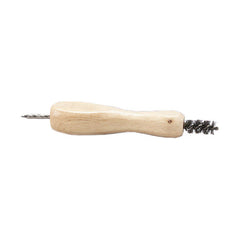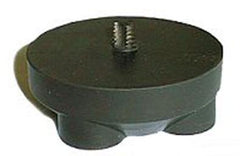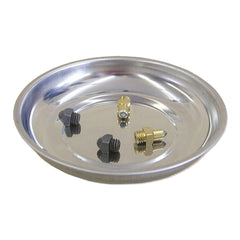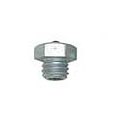Stud Kit Essentials
What You Need
Firstly, we highly recommend making your own stud kit, instead of buying a pre-made one. This will save you a lot of money, and will enable you to make it more personalised!
Stud Hole Cleaner
These come in many shapes and forms, some have metal bristles in a brush on one end and a 'pick' on the other, and some have just a brush. Both work, but beware the metal bristles flatten over time, so it is important to have two on hand.

Vaseline and Cotton Wool
The best advice we were ever given was to clean and tap your stud holes the night before and pack them using a farrier nail with vaseline and cotton wool. Then, on the morning of the competition, you can remove the wool, and save yourself a lot of time (and stress). This doesn't always work if they are in muddy yards, so allow more time the next morning.
Studding Tap
There are many taps available on the market, but by far the safest are the taps that are flat. This way, if your horse puts their leg down in the middle of tapping, it won't break in the stud hole and cause potential injuries.

WD40
Perfect for cleaning the stud holes. You can find this in hardware stores, or alternatively you can go and raid your partner or fathers garage, they will probably have some!
Adjustable Spanner/Wrench
Not all studs are the same size, and an adjustable wrench will help you adjust to the type of stud, and tighten them with much more precision.

Coke and a cloth
We are dead serious, make sure you grab some soft drink on the way to your event! After use, soak your studs overnight in coke and then wipe them clean. This way, you can remove rust. Trust us, it actually works!
Magnetic Tray
Now available on the market are small magnetic trays to stick your studs and tools too. This way, you aren't trying to find your lost stud in the straw while holding up a leg with a spanner in the other hand.. we know, we have been there too!

Types of Studs
Firstly, we need to mention the all elusive and often talked about '2 studs per foot', or only 'one on the outside'. Traditionally, most riders would only have a stud on the outside of each foot with the argument being that it would reduce the impact to structures during turning. Nowadays, you will find most riders have 2 per foot, in either both hinds or all 4. This way the foot is more balanced. It is recommended you use the same size stud in each foot, but you can have slightly larger studs on the hinds than the fore.
We also need to mention that constant use of larger studs on hard ground can cause fractures to your horse's hoof wall. Thus, it is important to use the smallest studs possible. It is also recommended that boots, bell boots on the fores and a stud guard are used at all times when studs are in use. This prevents potential injuries from a horse 'studding' themselves.

Road Studs- Short and flat, typically used on hard-packed flat surfaces such as roads or trails.

Grass Studs- Long and sharp, grass studs are designed for hard grass-covered ground or some arena surfaces. They aid with traction on grass but are not suitable for muddy conditions.

Mud/Deep Ground Studs- Designed for deeper, muddier conditions. They provide more traction and are designed to go through the top mud level to the hard ground below. They come in varying shapes and sizes depending on how wet the footing is.
It is important to consider the conditions, size of your horse and type of activity when choosing your studs. Often there is little consensus between competitors at competitions as to what studs you should use, so it is important you know your own horse and how they travel in certain conditions. Be sure to consult your farrier, coach and vet when making the decision to begin using studs!
